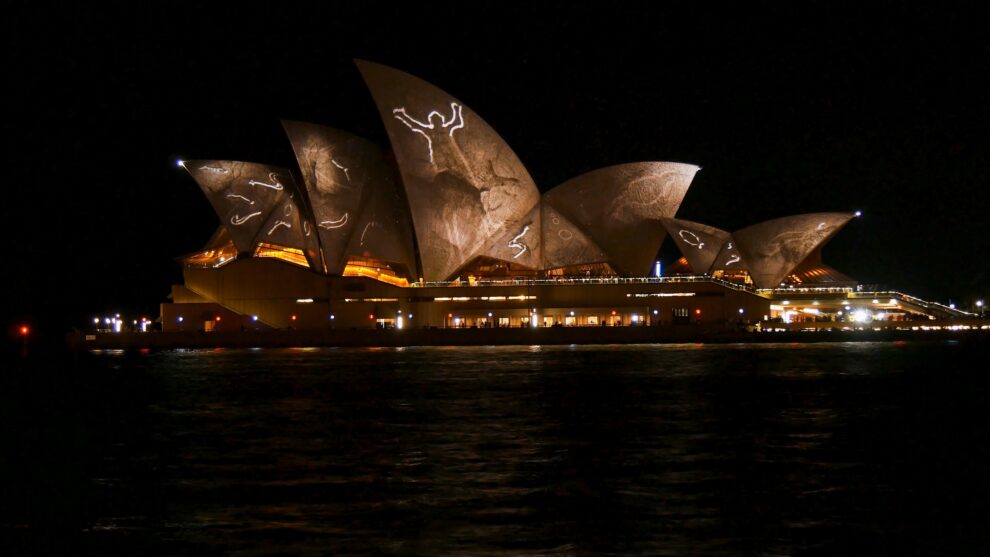Remember when Chewbacca played that holographic board game on the Millennium Falcon with CP30 in Star Wars? Of course, the real thing didn’t exist, and it was all special effects, but the idea was there all the way back in 1977, when the space adventure blockbuster hit movie screens. And the depiction of hologram technology has been present throughout the entire series.
But we still don’t have widespread holographic technology at present, contrary to the predictions of esteemed science fiction writers like Isaac Asimov or Arthur C. Clarke, who envisioned just such a future. That said, exciting developments are progressing well in Australia, where software and hardware developers are making fascinating headway.
Origins & Remarkable Aussie Advances
Hologram technology has actually been around for a long time. The original concept was quite accidentally discovered by Hungarian-British physicist Dennis Gabor, who also won the 1971 Nobel Prize in Physics, having become the inventor of the holographic method. He was working on improving electron microscopes, and the discovery of electron holography was a by-product of that research.
Nevertheless, optical holography would not advance until the development of laser technology, which enhanced the possibility of rendering 3D light fields using diffraction, providing images with visual depth and movement from different viewing angles. Now there’s an Australian company that has become the world leader in holographic display technology, partnering with major universities, national governments, defence contractors, and even game developers.
Based out of Brisbane, the work of Axiom Holographics is genuinely turning heads in multiple industries. They have already showcased interactive entertainment applications, including the Holoverse amusement attraction located on the Gold Coast, which opened in 2016. Elsewhere, holographic suites are already present at Queensland Museum and the Daintree Discovery Centre, and several Australian venues now have giant 4-player arcade games.
Axiom Holographics was also selected as one of the TIME Best Innovations of 2023, awarded for its work on the Hologram Zoo in Brisbane, within a 16,000-square foot complex. Visitors can experience and interact with scenes featuring animals, including polar bears and penguins from the Arctic, koalas and kangaroos in Australia, and the lions or elephants of Africa. There’s also a journey back through time itself, where people can walk alongside prehistoric dinosaurs.
Possibilities & Future Gaming Applications
One of the biggest segments within the games production industry is the iGaming sector, which focuses on betting and wagering. Often among of the most innovative when it comes to implementing new technologies, players typically check reviews for the most appealing online casino bonuses, then start playing their favourite games. Pokies are the most popular among Aussies, but they also enjoy table games like roulette or blackjack and many others.
Now imagine if casino games featured holographic projections. It’s certainly an intriguing idea and iGaming developers are already looking into possible applications. Fully 3D rendered games are currently available at leading casino sites, while Virtual Reality (VR) games are also present at some. As for coming to mobile, well, the faked Apple keynote speech below hinted at the possibility and it got more than 9 million views on TikTok, suggesting there’s huge interest in the fictional “iHolo” phone.
Having commercially available smartphones with holographic projections would undoubtedly be a major breakthrough, and various manufacturers are genuinely working hard towards that end. Within a few more years, it’s entirely feasible that we could all have this holographic technology in the very palms of our hands. That would quite literally be a game-changer for mobile games, and interactive software development across multiple platforms.
Right now, holographic entertainment and gaming applications need large spaces, highlighted by those already available for people to experience in Australia. But given the perfect storm of technologies currently under development, including some of the biggest advances in Artificial Intelligence and 3D geospatial rendering being made Down Under, it’s not hard to imagine mainstream consumer holographic gaming becoming mainstream before too long.














